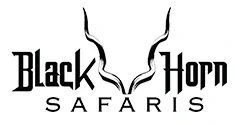South Africa boasts an incredible variety of game animals, but one of the most sought-after species is the majestic Greater Kudu.
Known for its impressive spiraled horns and stunning appearance, the Kudu is a true African icon. In this article, we will cover everything you need to know about hunt in South Africa for Kudu, from their habits and habitat to the recommended hunting gear and methods you will need to be successful on a hunt.
Description and Size

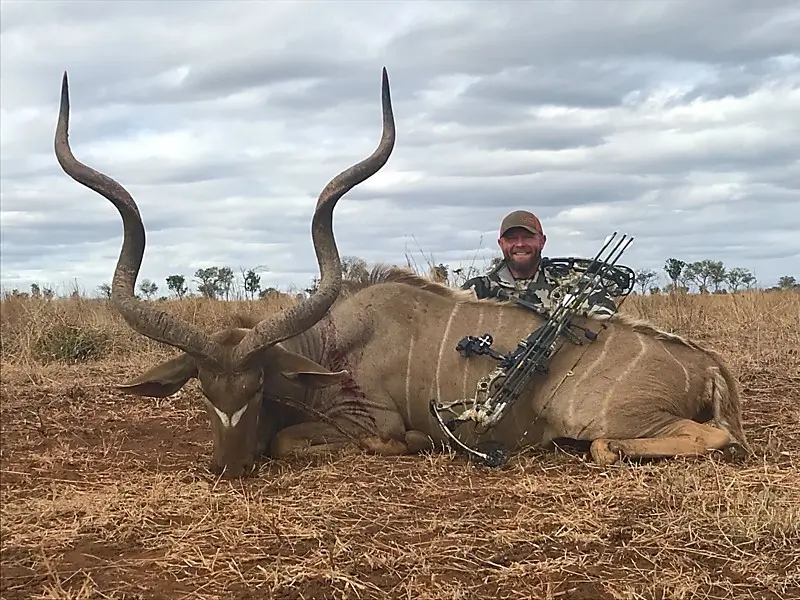
The Southern Greater Kudu (Tragelaphus strepsiceros) is a large antelope native to Africa. Kudu are herbivorous and belong to the family Bovidae. A Mature bull has a shoulder height of 54-60 inches and weigh between 420-600 pounds (190-272 kg).
While Kudu cows are slightly smaller, standing 47-55 inches at the shoulder and weighing between 260-460 pounds (118-209 kg). Both sexes have a grayish-brown coat with white vertical stripes, but only the males boast the impressive spiral horns, which can grow up to 72 inches in length.
Mating season occurs after the rain season and normally from from April through to May. Kudu have a gestation period of 240 days, after which one to two calves are born. Bulls are only with the cows during breeding season in Africa. These impressive spiral horned antelope are considered part of the plains game group of animals.
Water Dependence
Kudu are known for their adaptability to varying environmental conditions, and their water dependence is no exception. While they prefer habitats with available water sources, greater Kudu can also survive in semi-arid areas where water is scarce.
In South Africa Kudu obtain much of the water they need from the vegetation they consume, particularly during the rainy season. They feed on leaves, shoots, fruits, and flowers, which provide them with both moisture and nutrients. In drier conditions, they will seek out waterholes, rivers, or other water sources to drink, but they are not entirely reliant on them.
Kudus are known to be more water-dependent than some other African antelope species, but they can still go without drinking water for a few days.
In areas with limited water availability, Kudu adapt by becoming more active during the cooler hours of the day, such as early morning and late afternoon, to minimize water loss through respiration and evaporation. This adaptability allow Kudu to thrive in a wide range of habitats across Southern Africa.
Habitat and Locations
Kudu habitat is characterized by a preference for wooded bushveld, undulating hilly terrains, and areas with dense vegetation. These habitats provide the Kudu with ample cover for protection from predators and abundant food sources in the form of leaves, shoots, fruits, and flowers.
Greater Kudu are highly adaptable and can be found in various environments across Africa. In South Africa, they inhabit regions such as Limpopo, Mpumalanga, KwaZulu-Natal, Eastern Cape, and Northern Cape provinces.
Within these provinces, hunting can be found in both private game reserves and some national parks, demonstrating their ability to thrive in different types of protected areas.
Kudu are known for their elusive nature and are often called the “Grey Ghost” of the African bush. Their habitat preferences and adaptability allow them to blend seamlessly into their surroundings, making them a challenging yet rewarding quarry for sportsmen and wildlife enthusiasts alike.
Kudu prefer wooded savannah and hilly terrains with dense bush, which provide them with ample cover and food sources. In South Africa, they can be found in the Limpopo, Mpumalanga, KwaZulu-Natal, Eastern Cape, and Northern Cape provinces. Within these provinces, Kudu inhabit both private game reserves and national parks like the Kruger National Park and Pilanesberg.
Kudu hunting Safaris offer a variety of opportunities to pursue this elusive antelope on privately owned wildlife preserves.
Kudu Hunting areas with the best Trophy Quality in South Africa
The quality of Kudu trophies can vary depending on the region, habitat, and local genetics. Some areas in South Africa are particularly well-known for producing exceptional Kudu hunts. Here are a few notable regions in South Africa that produce exceptional trophy animals.
Limpopo Province:
As one of the largest and most diverse provinces in South Africa, Limpopo is home to numerous private game reserves and hunting concessions known for producing some of the best kudu hunting and kudu bulls with impressive horn lengths. The Limpopo province is a great choice for a hunting trip.
Eastern Cape Province:
While Eastern Cape Kudu tend to be slightly smaller in horn size than their northern counterparts, the region’s diverse habitats contribute to unique and impressive trophies. The Eastern Cape is home to the Eastern Cape Kudu subspecies, which is highly sought after by those looking for a distinctive trophy. The Eastern Cape has abundant kudu hunting.
Mpumalanga Province:
This province offers a variety of habitats, from high-altitude grasslands to subtropical Lowveld regions. The diverse landscape and healthy Kudu populations result in good trophy quality, with mature bulls often displaying impressive horn length.
KwaZulu-Natal Province:
Kudu found in this region can also produce excellent trophy animals due to the abundant food sources and good habitat conditions. The mixture of grassveld, bushveld, forest and mountainous areas provides a favorable environment for Kudu growth and horn development.
Ultimately, trophy quality can vary within each region. Hunting outfitters in Southern Africa with a solid reputation for producing high-quality Kudu trophies should be contacted when planning your Kudu hunting safari.
Consulting with experienced professional hunters and researching specific hunting areas will increase the likelihood of locating and harvesting an exceptional Kudu trophy and the best kudu hunting available.
Plains Game
Kudu are considered as part of the plains game family of animals. They are also members of the African spiral horn antelopes. Other members include Nyala, Bushbuck and Eland.
Other popular plains game hunting animals include:
Kudu Trophy Size
A trophy Kudu is typically determined by the size and shape of its horns. A mature bull with horns measuring between 50-54 inches is considered a good trophy, while exceptional trophies boast horns over 60 inches in length. The curvature and shape of the horns, as well as the overall appearance of the animal, also contribute to its trophy quality. The minimum measurement for entry into Rowland Ward is a horn length of 53 7/8″ while Safari Club International requires a score of 121″.
Eastern Cape Trophy Kudu
The Eastern Cape province is known for its unique subspecies of Kudu, the Eastern Cape Kudu (Tragelaphus strepsiceros strepsiceros). These Kudu have adapted to the region’s diverse habitats, which range from semi-arid thicket to dense riverine forests.
Although they are slightly smaller than their northern counterparts, Eastern Cape Kudu still offer an exhilarating hunting experience and impressive trophies. On a kudu hunt in the Eastern Cape one can expect trophy Kudu to measure between 45 – 50 inches, with an exceptional specimen measuring up to 53″.
World Record
The world record kudu, with an incredible horn length of 73 7/8 inches officially recognized by the Rowland Ward records of Big game, stands as a testament to the remarkable beauty of these magnificent spiral horned antelope. This incredible specimen, characterized by its deeply curved horns and elegant stature, captured the imagination of many hunters.
Hunting Rifle Recommendations
When on a rifle hunt for Greater Kudu, choosing rifles and calibers with sufficient power and accuracy are essential for the kudu hunter. Calibers such as .30-06, .300 Win Mag, and 7mm Rem Mag are popular choices for their proven effectiveness on medium to large-sized game.
Using premium quality bullets with good weight retention and expansion properties will increase the chances of a successful and ethical hunt and quick, clean kill. These calibers are also ideal for hunting the other game that may be included in a hunting package and found in the same hunting areas.
Shot Placement
Proper shot placement is crucial for a quick and humane kill. Aim for the heart-lung area, which is located behind the shoulder and slightly above the midway point of the body. A well-placed shot in this area will result in significant internal damage, ensuring a swift and ethical harvest.
The Most Successful Hunting Methods for Africa
Kudu are elusive animals known for their wariness and exceptional senses, making them challenging and rewarding game for sportsmen. Several hunting methods have proven successful in the pursuit of Kudu, each with its own merits and challenges.
Spot and Stalk Kudu Hunt
This is the most common and effective method for hunting Kudu. The client, along with their professional hunter, use binoculars or spotting scopes to locate Kudu from a distance. Often the hunting party will situate them selves on a ridge or other high ground position.
Once spotted, the approach is made quietly on foot, using the terrain and vegetation for cover. The goal is to get within an effective shooting range without alerting the Kudu so that an effective shot can be made.
Ambush Hunting
Kudu in South Africa, while having an unpredictable daily routines and patterns, can be hunted by this method. By identifying frequently used feeding areas, water holes, or game trails, you can set up an ambush, often from an elevated vantage point and wait for the Kudu to come within range.
This method requires patience and a keen understanding of Kudu behavior.
African Hunting from a Blind
Similar to ambush hunting, this method involves setting up a hunting blind near a known Kudu area, such as a waterhole or feeding ground. The blind provides concealment and helps to mask the hunter’s scent and movements.
The drawback is that you may need to wait for extended periods until a Kudu comes within range, making this method a test of patience and endurance.
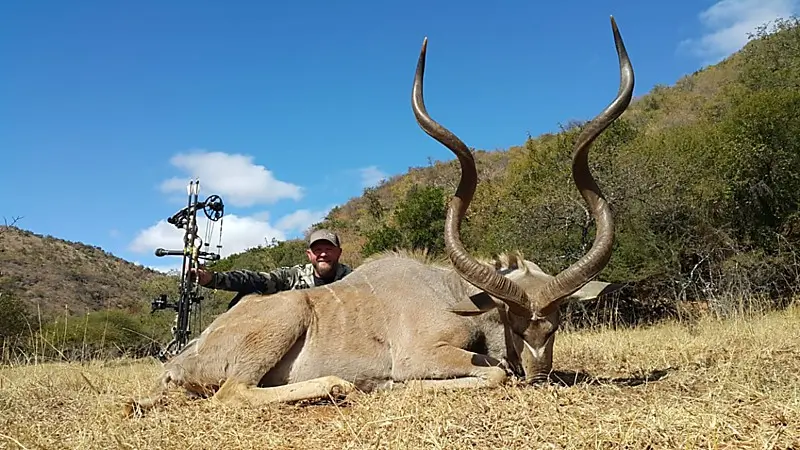
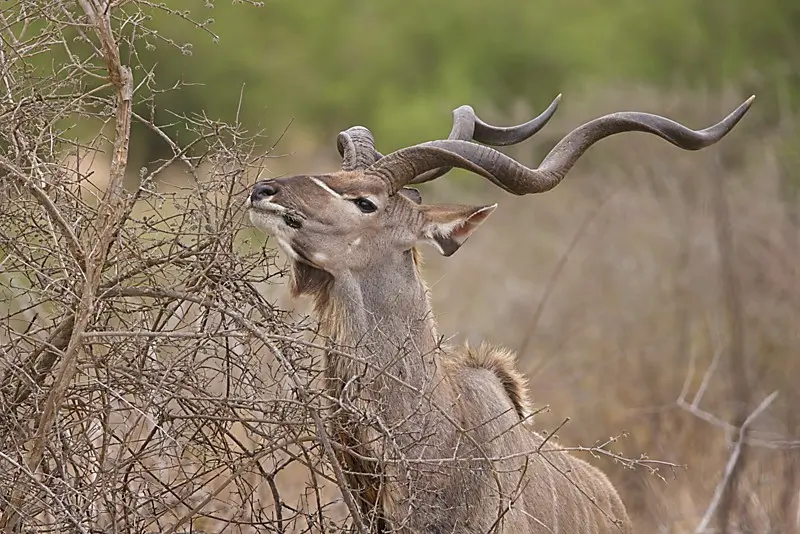
Kudu Bow Hunting Safari
Bow hunting Kudu is an increasingly popular method in South Africa. This method typically combines spot-and-stalk or blind hunting techniques with the use of a modern compound bow and arrow. Hunting with a bow requires skill, accuracy, stealth and perseverance. Bow hunting offers a unique challenge, as the hunter must get closer to the animal for an effective shot.
The Grey Ghost is not easily stalked to within bow range. Greater Kudu have incredible hearing, eye sight and sense of smell.
Each hunting method has its advantages and drawbacks, and the choice will depend on individual client preferences, skill level, and physical abilities.
Regardless of the Kudu hunting method chosen, it is important to remember that Kudu hunting requires patience, stealth, and a keen understanding of their behavior and habitat. Proper preparation, research, and guidance from experienced professional hunters will increase the likelihood of a successful and memorable Kudu hunting experience.
Equipment for Bow Hunting Kudu
Bow hunting is an increasingly popular method for Kudu South Africa. This challenging and stealthy approach requires patience, skill, and accuracy. When bow hunting, it is essential to use a high-quality bow with a minimum draw weight of 60-70 pounds and broadheads designed for deep penetration and a good blood trail. A well-placed arrow in the heart-lung area will result in an ethical kill, but be prepared to track your quarry, as Kudu bulls are known for their tenacity and endurance.
Cost
The cost of a Kudu in South Africa is $ 3 350.
On average, a 7 day hunting package targeting Kudu will cost $5,800.00.
This price typically includes accommodation, meals, guide fees, and transportation within the hunting area. Trophy fees for Kudus range from $3 000.00 to $5 000.00, depending on the size and quality of the animal. Package deals offer good value.
Kudu Packages
Various kudu hunting packages are available that will allow you to hunt some of the other sought after game animals on the same hunt. Animals that may be included in hunting packages include Cape Buffalo, Blue Wildebeest, Black Wildebeest, Nyala, Impala, Warthog, Gemsbuck, Red Hartebeest and Zebra. The best outfitter will have different options available.
These hunting packages offer great value and will add another dimension to your hunt. The cost for a kudu package will vary from around $ 8 000.00 to $ 11 000.00 depending on the other species included.
Conclusion – Kudu Hunts
Kudu hunting is a thrilling and rewarding experience for both novice and experienced hunters alike.
The combination of the Kudu’s elusive nature, striking appearance, and challenging terrain makes it a highly sought-after trophy. Kudu bulls are highly sought after and will make one of the most impressive trophies on your wall with their long spiral horns.
By understanding the Kudu’s habitat preferences, size, and hunting methods, as well as investing in the right equipment and preparations, you can embark on the memorable and successful African hunting safari of your life.
References
Hunting – On Safari in East and Southern Africa. Wynne-Jones, Aubrey. Southern Book Publishers. 1987 2nd ed. ISBN: 1868120066. 194 pp with drawings by Andre de Villiers. Good in laminated hardcover. Book No: 2503881
The Mammal Guide of Southern Africa. Author: Burger Cillié. Publisher Briza Publications
Signs of the Wild, Author: Clive Walker. Publisher Penguin Random House South Africa
FAQ’s Frequently Asked Questions
How much does a kudu hunt cost?
On average, a basic kudu hunting package in South Africa can start from around $5,000 to $8,000. However, for more comprehensive hunting packages that offer longer hunting periods, and include a few other species, the cost can go up to $10,000 or more.
Where is the best place to hunt Kudu in South Africa?
The Limpopo province in South Africa is renowned for offering the best kudu hunting opportunities. Within the province, the Waterberg region stands out as one of the best places to hunt kudu. The rugged landscapes, varied vegetation, and ample water sources in the Waterberg create an ideal habitat for kudu populations.
What is the best caliber for Kudu?
The best caliber for hunting kudu is the .308 Winchester and .30-06 Springfield,. These calibers offer a good balance between manageable recoil, flat trajectory, and sufficient stopping power for kudu-sized game.
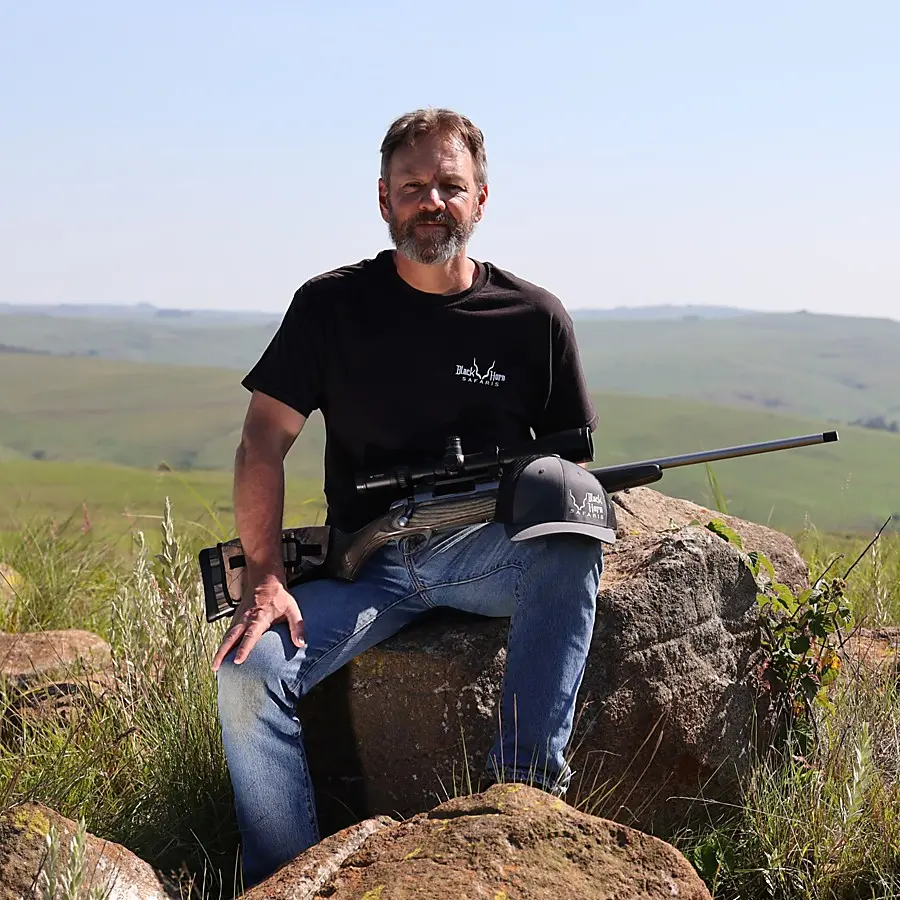
Adrian Anderson first obtained his Professional Hunters license in 1991. He is a Big Five and Dangerous Game licensed Professional Hunter and Hunting Outfitter. He has a tremendous love for wildlife and the African bush and enjoys sharing his knowledge with the hunting clients that he guides. Guiding hunters in Africa’s wild places is a passion and seeing them succeed with their goals brings satisfaction. With knowledge of the Safari industry built up over 32 years he is well qualified to give guidance to his hunting clients.
